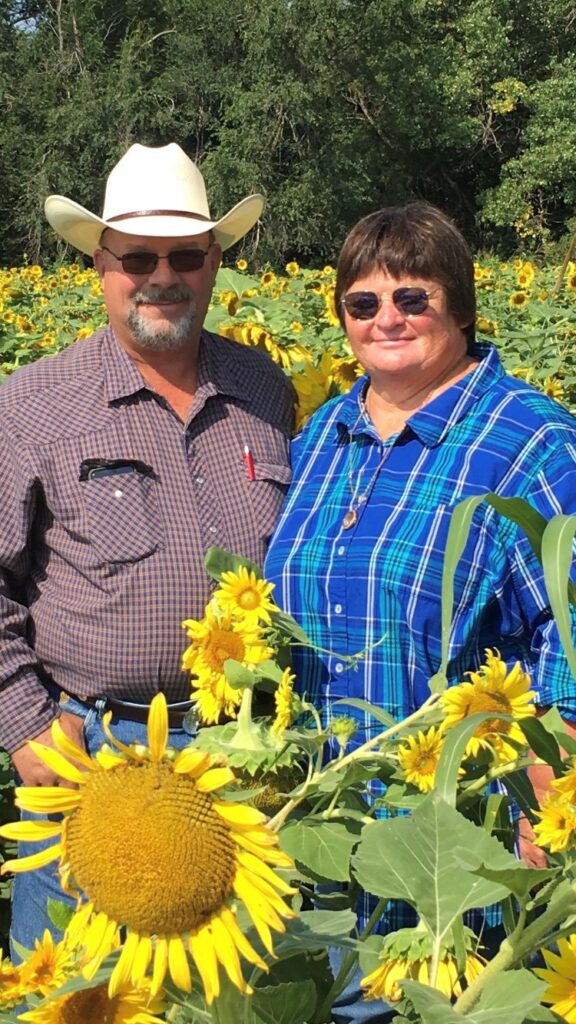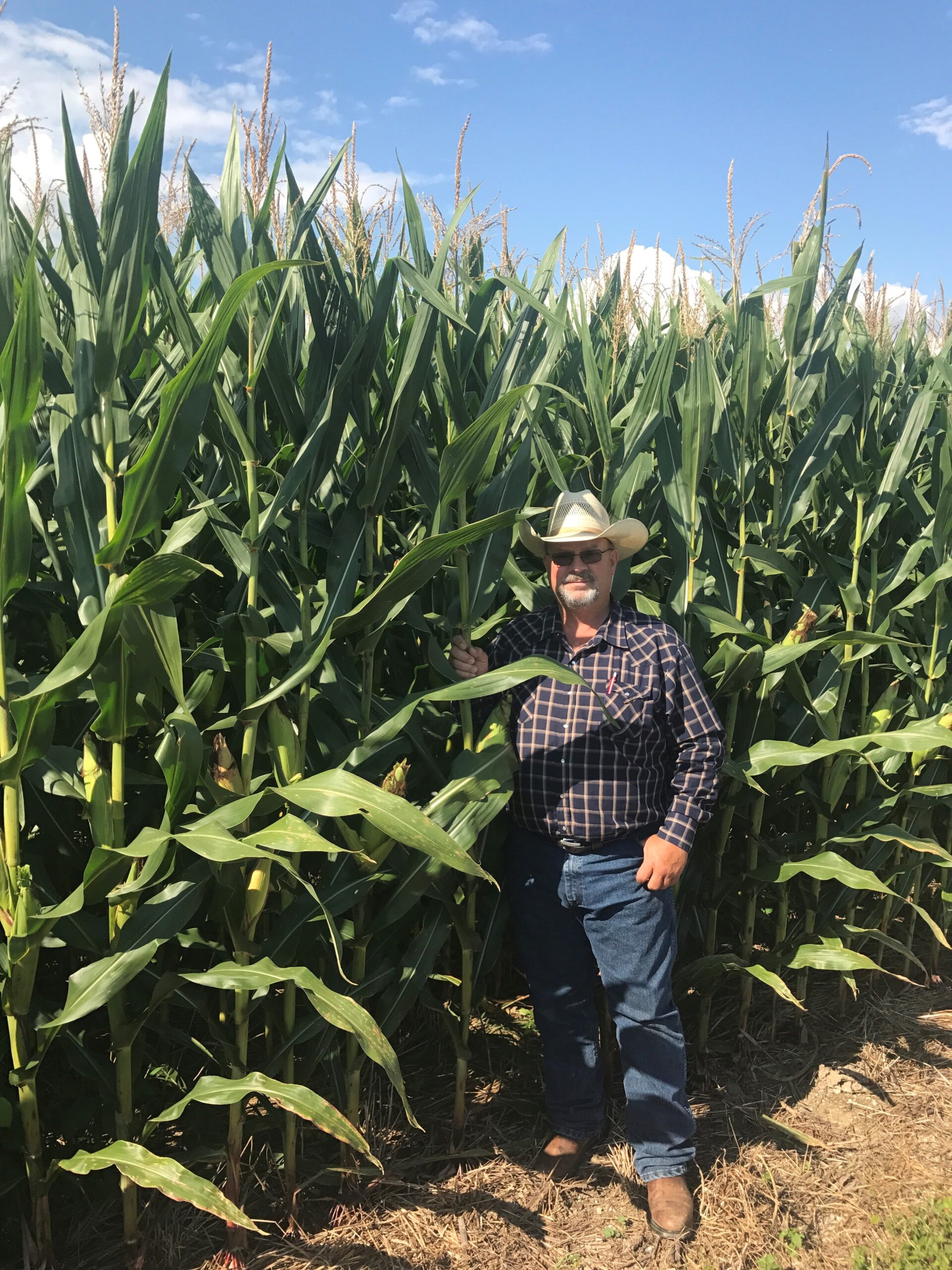The way Jimmy Emmons raises crops and cattle on his Oklahoma farm is very different from what they were 26 years ago. As we settle into a new year with new resolutions, he shares how planning and discipline have transformed his business.

If there are two New Year’s resolutions that will benefit every single agricultural business this year, it’s ditching the “that’s the way things have always been done” and “that will never work for us” attitudes.
Take it from northwestern Oklahoma beef and crop farmer Jimmy Emmons on just how much a business can transform when setting these common beliefs aside and adopting a willingness to try new things. For his nearly 2,000-acre family-owned and operated farm, this has been integral in the survival of the business he runs with his wife, Ginger, and longtime employee, Karson Liebold.
Stepping back 26 years, the philosophies the business was operated under and the practices implemented were radically different to present day. All the cropland was on a full tillage system consisting only of alfalfa, wheat and cotton with zero rotation. Cattle were only grazed on native rangeland with no integration between the two enterprises. Input costs were high, and income was dependent on the commodity market.
Now, the Emmons family is raising 12-13 different crops a year in a no-till system that integrates cattle into cropland by grazing cover crops grown in between cash crops. A field will never see the same crop more than once in four years and what is planted is based on what fits best into the growing season and soil needs.
While this has forced Jimmy to get creative in the marketing of his crops and be diligent in planning, it has opened doors to new opportunities that have led to premiums. Not to mention, the new approach has allowed the business to significantly cut back on inputs like herbicide, labor and machinery costs while restoring soil health so much that the NRCS has recently reclassified its type from Ustifluvent (a thin, loamy, light colored soil) to Fluventic Haplustoll (a darker, more developed soil).
So, what happened to spur this kind of change? And how did Oklahoma beef and crop even go about doing it?
To be frank, they didn’t have a choice if they wanted to carry on their Oklahoma beef and crop farm. In their full tillage system, input costs were high and prices were unsustainable. Jimmy was also starting to gain interest in conservation practices and knew that how they were farming was detrimental to the long-term performance of their soils.
Farming with his parents at the time who were apprehensive to change, Jimmy and Ginger started slowly by no-tilling one of the fields they owned to learn about how it could be applied broadscale. While doing this, they also added winter wheat and barley to the field’s rotation to graze cattle on. After running into compaction issues, they started working closely with the NRCS and ventured into cover crops.
From their days of conventional tillage and zero crop rotation to their current system, it has been a steady and calculated process to minimize risk while continuing to make progress. With it being the turn of the year and a natural point for people to start setting goals for their businesses and making plans to see them through, Jimmy shares a few key philosophies that have been the driving success behind where his farm is today.
Ditch the “it won’t work for me” mentality
Annual rainfall for Jimmy’s farm in Dewey County, Okla., is typically feast or famine. For context, in 2011 and 2012, they averaged 8 inches annually. In May of 2014 alone, they received 23 inches. These extreme precipitation levels have a lot of producers in the area gun shy about any practices that may jeopardize moisture availability. For a long time, Jimmy was one of them, buying into the concept that cover crops would suck up any available moisture in the ground and withhold it from the next crop.
Part of his cover crop work with the NRCS has debunked this belief and proved the exact opposite. Just this year, water infiltration trials have found fields integrated with cover crops to hold 17 inches of water with no standing or runoff, filtrating as deep as 5 feet into the ground.
However, when ditching the “it won’t work for me” mentality and looking to try something different, Jimmy encourages producers to thoroughly research to find what has worked in systems and environments similar to theirs and to start small with trial work.
Always make soil resilience a priority
When making any decisions about what to grow or how to grow it, Jimmy operates under the principle that everything they do will have an impact on the land and so everything they do will be in the best interest of the soil.
To build a thriving business while keeping soil health and resilience at the center of it all, Jimmy says it has required him to learn extensively about a plant’s life cycle and its impact on things from short and long-term weed interactions to carbon sequestration. For example, anytime a crop that is low in carbon is planted, such as a winter cover with legumes, a high carbon cash crop like corn or sorghum will follow to add more carbon back into the ground.
Set your goals and then work backward
Before setting any goals, Jimmy advises fellow producers to clearly define what they are trying to achieve. Goals can then be set accordingly and used to work backward to develop a roadmap to achieving them.
Implementing a new application is not going to be the silver bullet to fix all of your challenges, so defining these clear objectives will help you determine if a new practice is moving you in the direction you want to be.
The main reason behind each field having a four-year break between each crop is to fight weeds. Whatever weed is facilitated one year, needs to be different the next. With this as a starting point, Jimmy will look at water availability and the growing window to find what options he has available and then look for marketing opportunities to determine what goes in the ground.
Make an organized plan
Managing 12-13 different crops per year on his rotation strategy requires a lot of organization to stay on track.
While there is a heightened level of planning and organization when integrating a new practice, Jimmy says producers should not be intimidated and just look at as they would with any other business planning they would do for their current system.
If you’re buying cover crop seed, the same principles apply to buying cash crop seed. If you’re planning on no-tilling for the first time, you still have to plan planting times the same as if you were conventional.
His biggest piece of advice to setting goals and making a plan to achieve them is to start by making goals for where you want to be in three to five years and then to make small changes, even if it is just taking soil samples the first year. As he says, you wouldn’t go all-in on your first hand of poker. The same principle applies to business and farming practices.
Stick to it
While planning to do something is one thing, following through with it is another. From the work he has done with other producers, Jimmy says sticking to the plan is what will determine whether or not a farm or ranch is actually going to go the distance and make improvements or whether they will go back to their security blanket and do things the way they’ve always done them.
This means if a new application isn’t going as planned, rather than reverting, look at what went wrong and what your expectation of it was and then adjust accordingly.
Look for unconventional marketing opportunities
Building soil health and getting on top of weeds by staying as far away from a monoculture system as possible has worked, but it also has to keep the lights on. By looking for unconventional market opportunities from what is historic to his area, Jimmy has been more than able to pay the bills, capturing premiums outside the commodity market.
This has led him to grow sunflowers that would be used for squirrel feed in Kentucky, to growing high spec sesame seed for McDonald’s. To capture these unique opportunities, Jimmy says to look further afield than the likes of non-GMO corn and soybeans that typically have little to no premium and to get creative in what smaller markets need. A huge area of opportunity that he sees is growing crops specifically for small food companies as the demand for products developed from ingredients grown with regenerative practices make their way into the health and wellness market.
And while identifying these opportunities seems like hard work, once you get your foot in the door, you will quickly become a go-to person.
Build a community

Crucial to Jimmy’s journey has been surrounding himself with like-minded people to encourage him forward and to share experiences with. When he first started, this community for him was spread across the country and required cross-country road trips to see their applications in practice. He also became immersed in his local conservation groups to build his network closer to home.
While these are still key components to his community, the adoption of social media has been a game-changer for expanding his network. By joining producer Facebook groups and engaging in conversation on Twitter (his handle is @jimmy_emmons) he has been able to bust his community wide open to learn from others while sharing his own experiences.
His biggest piece of advice for anyone wanting to step away from conventional practices is to build their community from the beginning and to keep growing it. For every neighbor you have looking over the fence saying there is no need for change, 100 others are showing you that not only is change possible, but it is also prosperous.
Read more about Jimmy Emmons and profiles in soil health
Cover Crop Corner is an educational column from forage application company GO SEED and free for print or digital distribution by media outlets. We ask that attributions be made to the author or GO SEED when published. For more information or to be added to the distribution list, please email laura@abccomms.co.uk.


